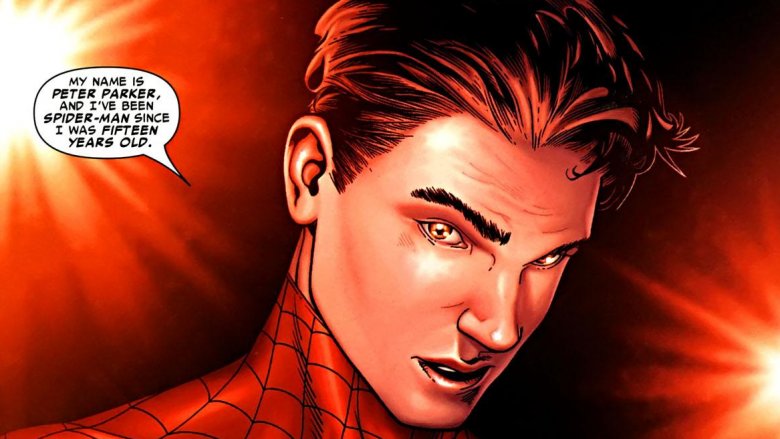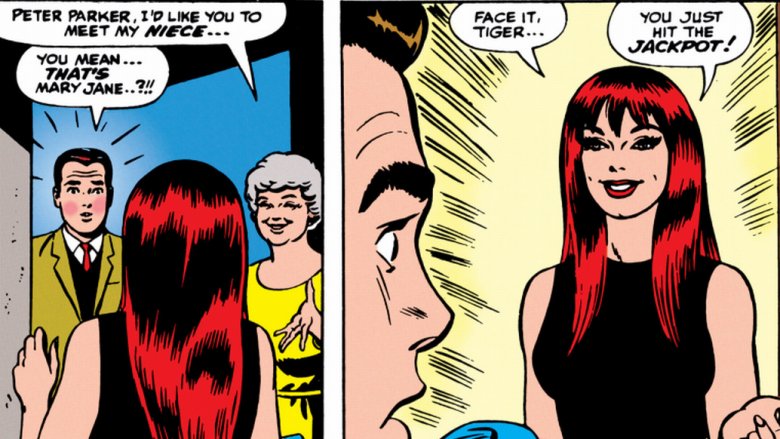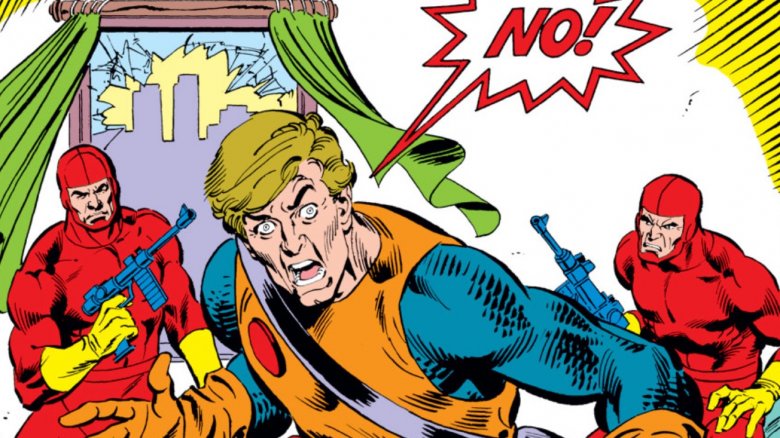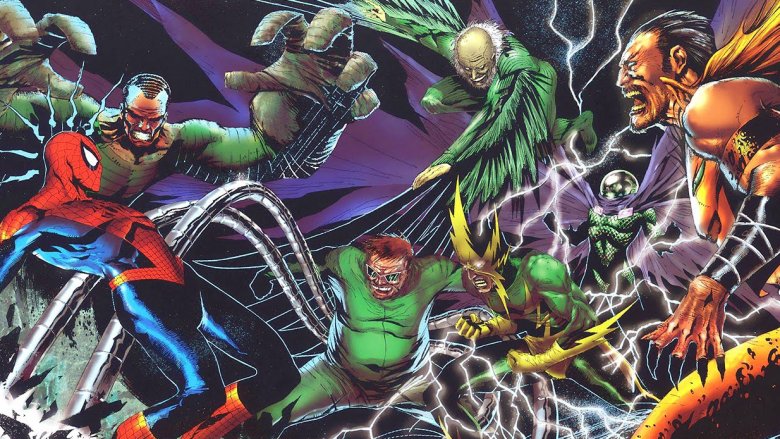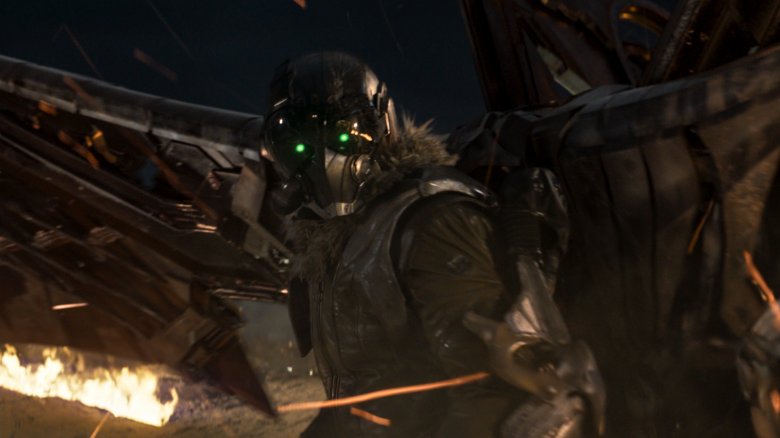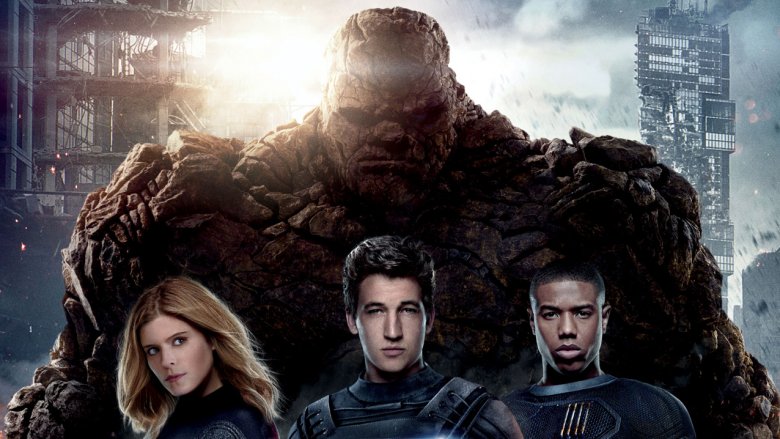The Ending Of Spider-Man: Homecoming Explained
The dust from the battles has settled, all the bad guys have been defeated and shipped off to prison, and all is right with the Marvel Cinematic Universe now that Spider-Man: Homecoming has finally made Peter Parker a key piece of the MCU's ongoing adventure. So that's great. But while Spider-Man: Homecoming answered a lot of questions (first of all and most importantly, yes, it turns out Marvel does actually know how to make better Spidey movies than Sony), it posed a lot more, especially with the way it ended. If you've made it through the movie and you're wondering who certain characters really are, what certain lines might mean for the wider story, or what it looks like our friendly neighborhood wall-crawler might get himself up to next, we've got you covered. Is your spoiler-sense tingling, film fans? Don't worry—it's only because you're about to swing right into an in-depth explanation of just what the ending of Spider-Man: Homecoming means.
The press conference
Peter turning down Tony Stark's offer of membership in the Avengers was a bit of a surprise, but it also had some hidden meaning—not to mention implications for future films.
Fans of the comics probably had a real sense of déjà vu when Tony mentioned he had a big crowd waiting, and had also made a cool new suit for Spider-Man if he agreed to join the team and introduce himself to the press. This sequence closely mirrors a similar, seminal moment during the comic book version of Civil War, when Peter joins Iron Man's team in exchange for a cushy job—and on the condition that he join Iron Man for a press conference to announce to the world that Spider-Man is actually Peter Parker. Luckily for Peter, in the movie he decided not to hold the press conference, because in the comics it eventually led to a literal deal with the devil. Dodged a bullet there, Spidey!
More importantly for film fans, Peter's non-membership in the Avengers sets up some interesting questions heading into next year's Avengers: Infinity War. We already know Spider-Man, like every other character in the MCU, is making an appearance, and given his role in Captain America: Civil War, it was assumed by many that he would be doing so as an official member of the Avengers. Now it seems like that may not be the case. So how involved will Spidey be in Infinity War? Will he be a central player, or just make a cameo? Here's hoping he ends up joining the team. After Spider-Man: Homecoming, it's official—more Spidey is definitely better than less Spidey.
Peter's love life
Two big things happened at the end of Spider-Man: Homecoming that have big implications for Peter's future love life. First and most obvious is the fact that his romantic interest in the film, Liz, ended up moving away to Oregon, meaning in the sequel she'll likely be busy trout fishing instead of serving as a supervillain's pawn.
More interesting, of course, is his classmate and fellow debate team member Michelle's revelation that her friends call her M.J. That's a major hint that she'll be taking the place of Peter's number one romantic interest from the comics, Mary Jane Watson. Especially considering there's no sign yet of Gwen Stacy in the MCU, chances are fans will get to see Peter and M.J.'s relationship take a romantic turn in the sequel, which should be interesting given that this version of M.J. seems much more assertive—and acerbic—than her predecessors. Looks like you might have met your match, Spidey!
The guy in the chair
One of the coolest parts of Spider-Man: Homecoming was Peter's relationship with his awesomely nerdy best bro Ned Leeds, a.k.a. his guy in the chair. Just as we were living vicariously through Peter, Ned was too, and we were also simultaneously living vicariously through Ned living through Peter, so our geeking out and his geeking out formed a kind of nerdvana Inception. In other words, he was awesome.
One thing, though: he might also become one of Spider-Man's deadliest supervillains. See, in the comics, Ned Leeds is the name of a friend of Peter's who works as a reporter at the Daily Bugle. Later on, Ned secretly becomes the terrifying supervillain known as the Hobgoblin.
If that sounds a little too similar to the arc in the original Sony Spider-Man trilogy, in which Peter's best friend Harry became the supervillain the Green Goblin, well, there's a reason—in the comics, Ned becomes the Hobgoblin after finding a stash of the deceased Green Goblin's gizmos and weapons.
So will Ned do a heel turn and become Peter's mortal foe? We sure hope not, but we wouldn't put anything past Marvel. That's just how comics go.
Those other supervillains
While the Vulture got nicely wrapped up for the authorities at the end of the movie, the same can't be said for the film's other supervillains. First, Peter left the Shocker stuck to the side of a bus at the high school, but we never got to see him actually arrested. And then there's the Vulture's other associate, the Tinkerer, who was turning all those alien objects into cool gadgets like anti-gravity guns and giant robotic wings. Even though the whole airplane heist thing was his idea, he wasn't anywhere to be seen when the dust settled.
Chances are pretty good we'll be seeing more of those guys in future films, especially since the mid-credits scene hinted at the possibility of an appearance by the Sinister Six in the next film. Both Vulture and Shocker are sometime members of that team of bad guys, as is Hobgoblin, and with the Tinkerer making bizarre weapons for the highest bidder, it's not much of a leap to get characters like Doctor Octopus, the Rhino, or Mysterio in the mix. Here's hoping!
What's the big deal with the plane?
At the end of the movie, fans might be left wondering if Peter actually learned any lessons at all from the fiasco on the Staten Island Ferry. After all, by interfering with the weapons deal on the ferry, Peter nearly got everybody on board killed. So what does he do as a follow-up? Rather than just let the Vulture rob Stark's totally automated plane, which would essentially be a victimless crime, Peter interferes again, nearly causing the plane to crash into a heavily populated residential area in Brooklyn before smashing it onto the beach on Coney Island. It seems really, really reckless. After all, what's the big deal if Vulture gets away with Stark's extra junk?
Here's the big deal. When the Vulture decides to steal Tony Stark's big flying box of loot, Happy Hogan nicely gives the audience a rundown of some of the super awesome junk being shipped upstate in their totally unguarded, automated airplane. The list includes stuff like a prototype of Captain America's shield, Iron Man's Hulkbuster armor from Avengers: Age of Ultron, and Thor's magic belt Megingjörð, which has never actually appeared in the movies but which allows Thor to double his amazing strength. Plus, it's filled with stuff like a box of arc reactors, which you just know are awesome.
Given that the Vulture is planning to sell this stuff to the highest bidder, and given that both Avengers and Age of Ultron started with villains appropriating cool stuff and nearly destroying the world, there's no telling how many lives would have been lost down the road if Peter hadn't stopped that plane. And best of all? It prevented us all from having to learn how to pronounce Avengers 5: Megingjörð War.
The X-Men and the Fantastic Four
With Homecoming, Marvel proved it can make better Spider-Man movies than Sony—and there's no reason to think it'd be any different for the X-Men and especially the Fantastic Four. In a weird way, Spider-Man: Homecoming might actually bring that closer to becoming a reality. Though Fox and Marvel haven't historically been on the best terms, Homecoming proves Marvel can put out great material when they're working in tandem with another studio. And better films means more money.
Right now, Fox isn't making one thin dime from the Fantastic Four, or other properties they have the rights to, like the Silver Surfer. Even splitting the proceeds with Marvel, Fox would pull in a lot more cash on an MCU Fantastic Four film than they're ever likely to make by themselves. Seeing Marvel make a top-notch film like Spider-Man: Homecoming—and hundreds of millions of dollars for Sony—could convince Fox to partner with Marvel to bring more of the publisher's classic superheroes into the Marvel Cinematic Universe. Now that would be a truly heroic feat.
